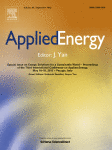 Authors: Tuong-Van NGUYEN, Brian ELMEGAARD
Authors: Tuong-Van NGUYEN, Brian ELMEGAARD
Affiliation: Section of Thermal Energy, Department of Mechanical Engineering, Technical University of Denmark, Building 403, Nils Koppels Allé, 2800 Kongens Lyngby, Denmark
Reference: T.-V. Nguyen, B. Elmegaard / Applied Energy 183 (2016) 43–60
Abstract: “Natural gas liquefaction systems are based on refrigeration cycles – they consist of the same operations such as heat exchange, compression and expansion, but they have different layouts, components and working fluids. The design of these systems requires a preliminary simulation and evaluation of their performance. However, the thermodynamic models used for this purpose are characterised by different mathematical formulations, ranges of application and levels of accuracy…”
DOI: 10.1016/j.apenergy.2016.08.174
Comments: the authors indicate that the GERG model which they rate as the most accurate model for natural gas mixtures, as the predicted values for all thermophysical properties are in the range of experimental uncertainties, has now been implemented in software components that adhere to the CAPE-OPEN standard. By this way they acknowledge the work done at Ruhr Universität Bochum by Florian DAUBER under the supervision of Professor R. SPAN. The authors did not use the GERG model as a CAPE-OPEN component since they use a process simulator in which the model is embedded as such. Making the GERG model CAPE-OPEN compliant enabled Florian DAUBER to make use of it in the very same process simulator prior to having the new version of the GERG model available there. It shows that CAPE-OPEN enables quick access to research results, especially by industry.
